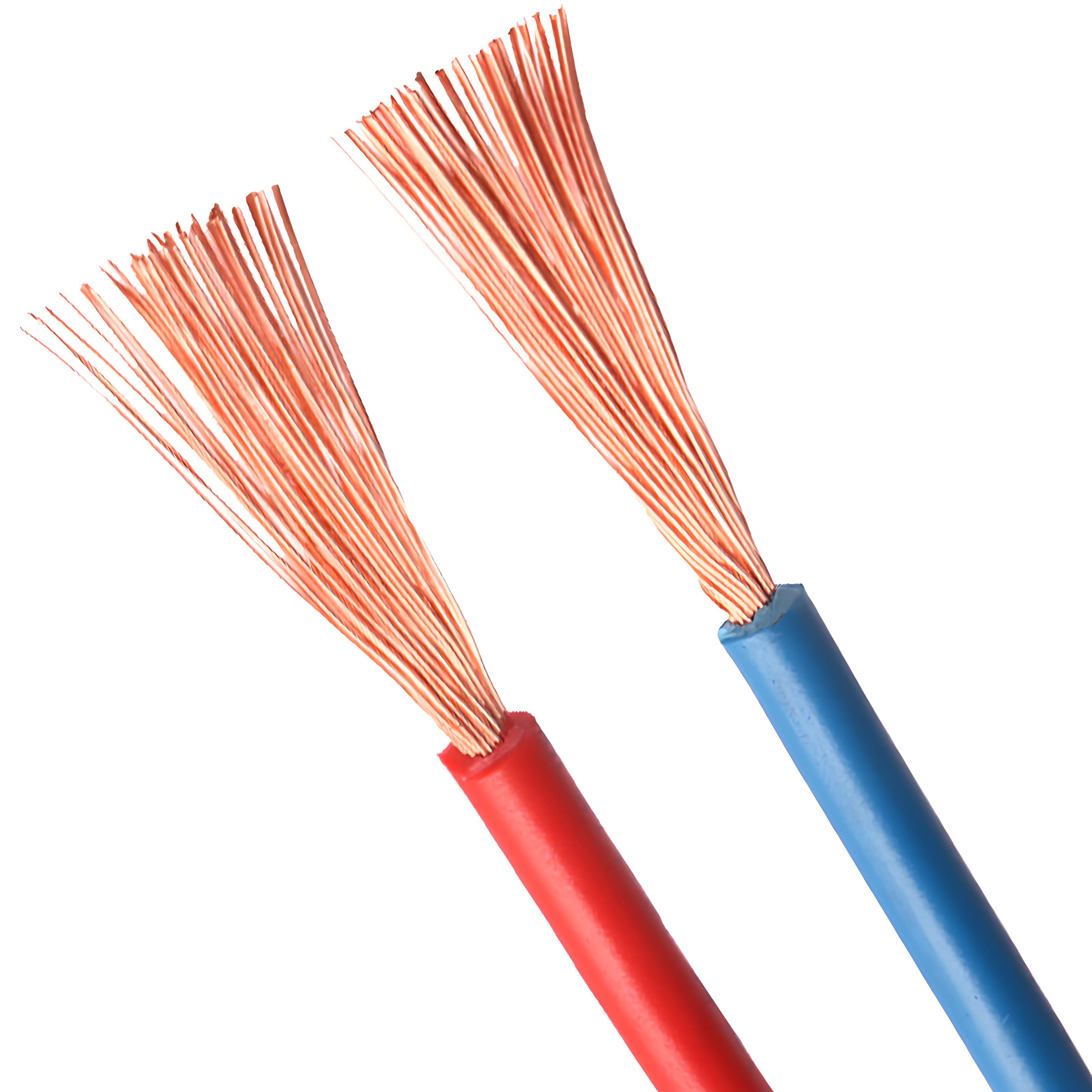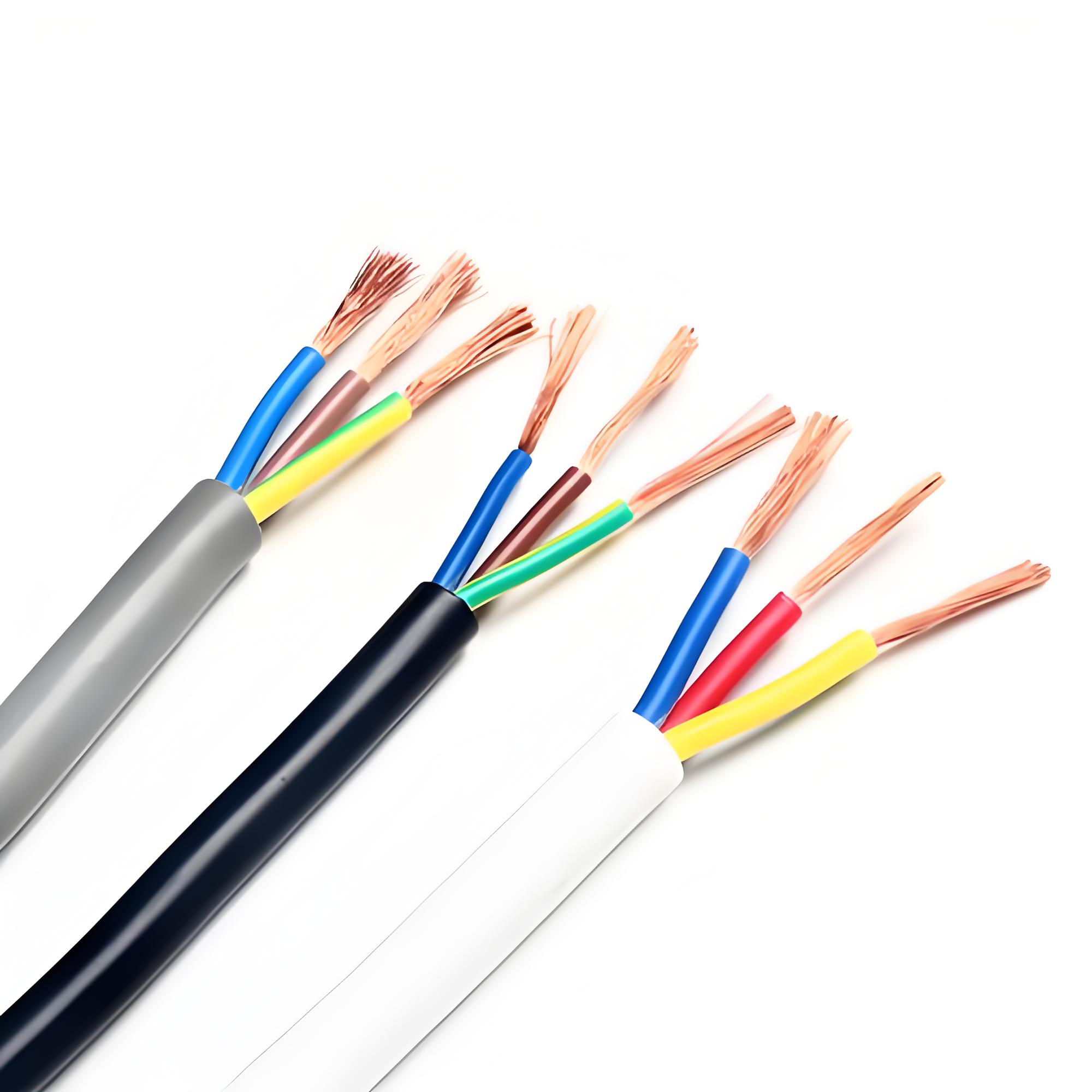What is the difference between solid and stranded wires in electrical circuits?
I. Differences between solid wires and stranded wires
(I) Structural aspects
Solid wire
Composed of a single strand of metal conductor, usually made of conductive materials such as copper or aluminum. For example, common solid copper wires can have diameters ranging from a few millimeters to a fraction of a millimeter.
Has a simple structure with a continuous conductor and no gaps.

Stranded wire
Formed by twisting multiple fine metal strands together. For example, a common stranded wire may consist of dozens or even hundreds of fine copper strands.
The stranded structure gives the wire a certain degree of flexibility, allowing it to be bent and twisted without breaking easily.

(II) Performance aspects
Current carrying capacity
Solid wires usually have a higher current carrying capacity. Because the cross-sectional area of a single conductor is larger and the resistance is relatively smaller, it can allow a larger current to pass through. For example, in some high-power electrical equipment such as large motors and transformers, thicker solid wires may be used to transmit large currents.
The current carrying capacity of stranded wires is relatively lower. Although the total cross-sectional area of multiple fine metal strands may be equivalent to that of a solid wire, the cross-sectional area of each fine metal strand is smaller, resulting in a relatively larger resistance. Therefore, under the same conditions, the current that a stranded wire can carry is usually less than that of a solid wire.
Flexibility
Stranded wires have better flexibility. The stranded structure of multiple fine metal strands makes the wire easily bendable, twistable, and coilable without damaging the conductor. For example, in occasions where frequent movement or bending is required, such as the power cords of electrical appliances and headphone wires, stranded wires are usually used.
Solid wires are relatively hard and have poor flexibility. Bending a solid wire may cause the conductor to break, especially under repeated bending.
Anti-interference ability
Stranded wires have a certain degree of better anti-interference ability to some extent. The stranded structure of multiple fine metal strands can form a natural shielding layer, reducing the interference of external electromagnetic fields on signals. For example, in occasions where high signal transmission quality is required, such as audio cables and video cables, the anti-interference performance of stranded wires is more important.
Solid wires have relatively weaker anti-interference ability and are easily affected by external electromagnetic fields.
Installation and usage convenience
Stranded wires are usually more convenient in installation and usage. Due to their good flexibility, they can more easily pass through narrow spaces and bypass obstacles. For example, inside complex electronic equipment or in building decoration, stranded wires are easier to install.
Solid wires are relatively hard and may require more tools and skills for installation. It is more difficult to install in narrow spaces or where bending is required.
II. Reasons why both types of wires are necessary
Meet the needs of different application scenarios
In high-power, high-current application scenarios such as industrial equipment and power transmission, solid wires are needed to ensure sufficient current carrying capacity and stability. For example, in the power distribution system of large factories, thick solid cables can bear high current loads and reduce energy loss.
In occasions where flexibility and anti-interference ability are required, such as the internal connections of electronic equipment and the charging cables of mobile devices, stranded wires are more suitable. For example, the data cables of mobile phone chargers are usually stranded wires, which are convenient to carry and use and can reduce the impact of external interference on data transmission.
Give play to their respective advantages
The high current carrying capacity and low resistance of solid wires can improve the efficiency and reliability of circuits. In some occasions with strict power requirements, solid wires can ensure the stable transmission of power and reduce energy loss. For example, in solar power generation systems, the connection lines from solar panels to inverters usually use solid wires to minimize resistance loss.
The flexibility and anti-interference ability of stranded wires can meet some special installation and usage requirements. For example, in audio equipment, stranded wires can reduce signal interference and provide better sound quality; in automotive electronic systems, stranded wires can adapt to the vibrations and movements of vehicles and ensure stable circuit connections.
Consider costs and performance comprehensively
In some applications, appropriate wire types can be selected according to cost and performance requirements. Solid wires are usually relatively simple in the manufacturing process and may have a lower cost, especially for large cross-sectional wires. While stranded wires may have a relatively higher cost due to the stranding process of multiple fine metal strands. For example, in some projects with limited budgets, solid wires or stranded wires can be selected according to actual needs to achieve the best cost-effectiveness.
At the same time, different types of wires can also be used in combination in the same circuit to give full play to their respective advantages. For example, in a complex electronic device, solid wires can be used in high-power parts, and stranded wires can be used in signal transmission parts to improve the performance and reliability of the entire system.
The Electricity Encyclopedia is dedicated to accelerating the dissemination and application of electricity knowledge and adding impetus to the development and innovation of the electricity industry.













